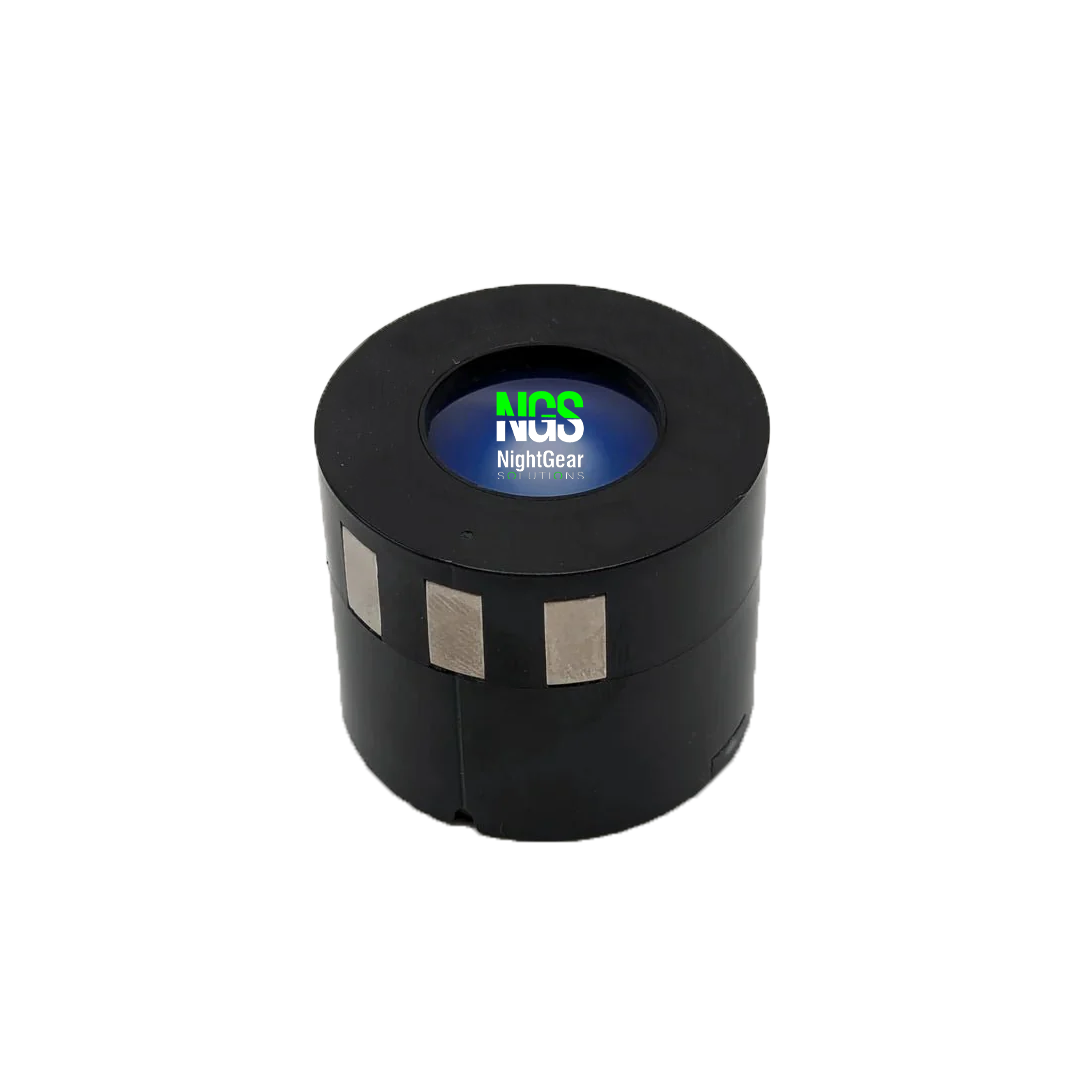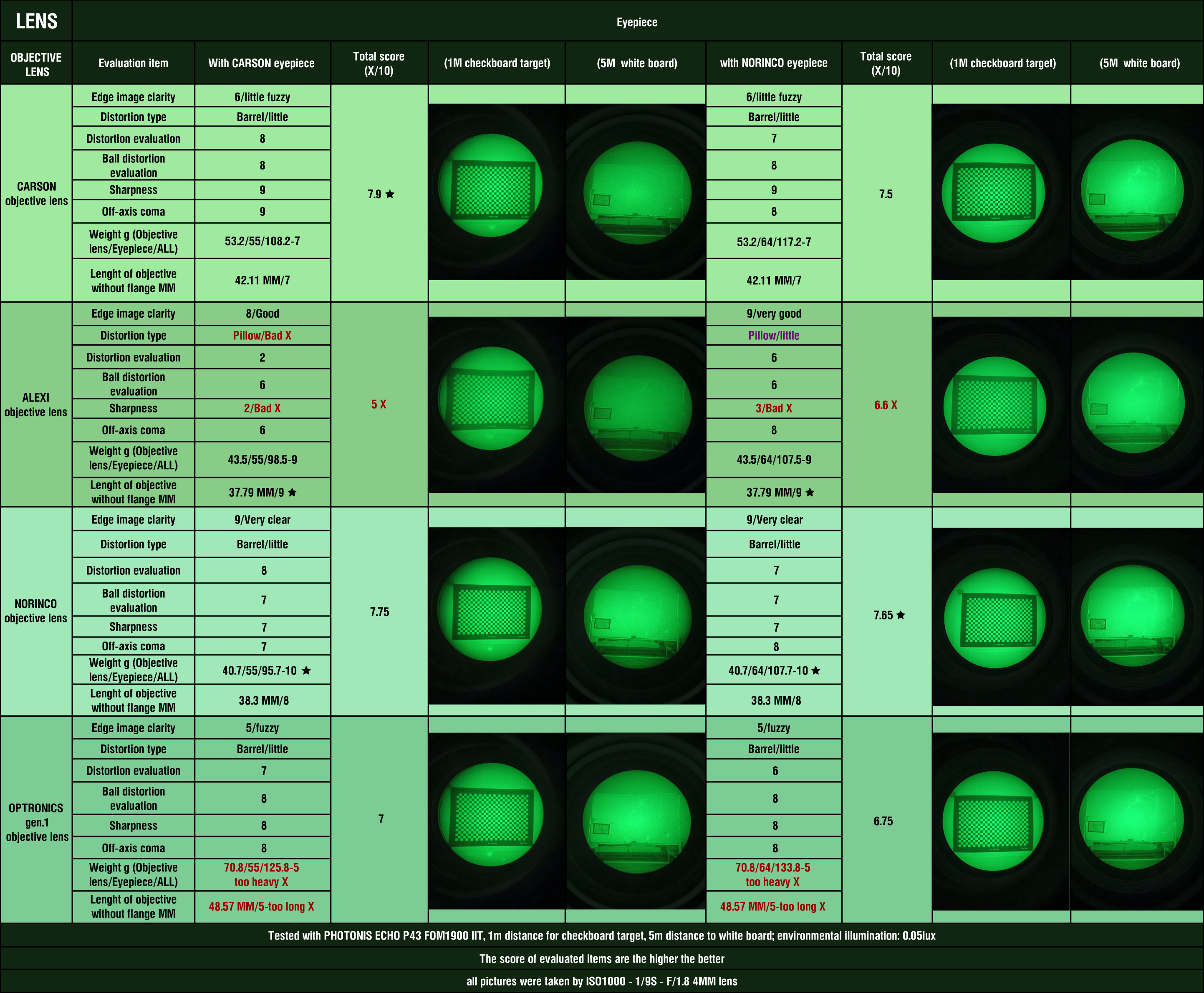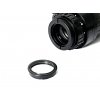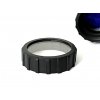Night Vision Terminology - The complete list of basic terms
WORK IN PROGRESS
When talking about Night Vision, there are many terms and factors that play a role in choosing the right device. That's why we at Nigh Gear Solutions have written a list of terms that are good to know. These terms are used all over the world, so you only need to learn them once.
Below you will find all the necessary terms and explanations for choosing and buying night vision.
- This article is not the most detailed. We are only trying to briefly explain the basic terms so that even an uninitiated person can learn the basics of night vision. But don't worry, more detailed descriptions of all the parameters, functions and terms mentioned below can be found in our planned blog (coming soon) so that even Night Vision nerds can learn everything they can. Take these descriptions as our free gift to anyone who would like to get into the subject of night vision.
If you need any help with Night Vision Problematics, feel free to contact us here
Use links to navigate:
Monocular, Binocular, Pseudo-binocular or Panoramic
Night Vision Quality Checklist
maintenance of Night Vision devices
IIT:
- Image Intensifier Tube - IIT, or only the Tube is the heart of the NVG. It is the device witch multiplies the available light. It can be found in analog Night Vision devices (not the digital night vision). IIT does not create light, it only multiplies residual light from e.g. the moon, stars, lighting, etc. Night Vision can also operate in the IR spectrum of light. The IR spectrum is invisible to the human eye. Therefore, we can use an IR laser or an Illuminator that can only be seen through this device.
- There are multiple types of tubes. They differ in diameter, phosphor and performance. IIT also dictates all the parameters such as Autogate of manual gain. below you can find descriptions of all the parameters of an IIT. (SNR, RES, FOM, EBI, HALO, GAIN etc.)

SNR:
- Signal to Noise Ratio - SNR is the amount of light signal entering the eye divided by the (perceived) noise seen by the eye. The SNR of the IIT determines the resolution of the screen in low light. the higher the SNR, the better the IIT's ability to distinguish objects with good contrast in low light. The higher the number, the better the performance (less noise).


Resolution:
- Resoultion of the IIT is number of lines per millimeter of the image user can see. Image intensifier resolution is measured in mentioned lines per millimeter (lp/mm) The higher the number, the better the performance.
FOM:
- Figure of Merit - FOM is a general performance measurement. The Figure of Merit is calculated by multiplying the Resolution with the Signal to Noise ratio. This is how we get a number (e.g. 1800) according to which we can approximately determine the performance of the device. However, it is not the only parameter to look at when choosing a device. The higher the number, the better the performance.
- Watch out, when buying night vision, it is not good to look only at the FOM. It is always good to know the SNR of a given tube. SNR is very important. When we multiply RES x SNR to calculate FOM, it may happen that some tubes will have the same FOM, but a different image. This is because some tubes have a higher Resolution and a lower SNR, so in simple terms, worse performance with low ambient light - more noise.
Gain:
- Also referred to as brightness gain or brightness gain. It is the number of times the tube multiplies the residual light. The higher the number, the better the performance.
- Gain is calculated differently for GEN.2+ and GEN.3. To calculate the Gain on GEN.2+, you take the given number from GEN.3 divide it by roughly 3,14 (GEN.3 Gain) / 3,14 = (GEN.2+ Gain). This is due to different measurement techiques. SO foe example the GEN.2 tube with gain of 10000 is equvalent of 31 400 GEN.3 Gain.
Phosphor:
- The phosphor screen in night vision devices is critical because it converts electrons (see below) into photons, allowing users to see in low-light conditions. It is precisely because of phosphor that we can see through night vision in shades of one color. Several different types of phosphor are used, which determine whether we see in shades of green (Green Phosphor P22, P43) or blue/white (White Phosphor P45).



EBI:
- Equivalent background illumination - EBI determines the lowest level of illumination at which an image can be recognized. The lower the number, the better the performance.
- EBI is not constant and can change with the different temperature.
- EBI is calculated differently for GEN.2+ and GEN.3. To calculate the EBI on GEN.2+, you take the given number from GEN.3 divide it by 10. (GEN.3 EBI) / 10 = (GEN.2+ EBI).
Autogate:
- AG is a function of the Tube that automatically controls the power supply to the photocathode. Rapidly switches the voltage with which the Tube is powered during sudden flashes. In this way, it can "mute" the image for a quick period of time. Thanks to AG, we are able to see even through fast flashes such as muzzleflashes. Autogate also reduces the "brightness" of the image in environments with more light. AG protects the tube. We can often hear a squealing sound in devices with autogate. This is due to the electronics of the device, in which a greater amount of energy is accumulated at that moment.
Automatic Brightness Control:
-
like Autogate, it reduces the voltage on the tube. But it does it more slowly and we don't see the image oscillation. When the lighting environment changes, ABC can dim the image for us after a while so that we can see the ideal amount of light. People often confuse ABC with AG. Think of it like automatic gain adjustment by the device when lighting conditions change.
-
For devices that have Autogate, we expect them to function similarly to ABC devices and at the same time be able to reduce the power supply during rapid flashes.
-
Automatic Brightness Control can only slowly adjust the optimal amount of voltage. The advantage is the already mentioned absence of oscillation (image flickering), which we can see with the Autogate function.
- ABC also protects the IIT
- ABC is also commonly called Auto-gain (no to be mistaken with Autogate) or BSP - Bright Light Protection
- Tubes with ABC seem to have more of the blur effect when dimming in the strong light environments.
- ABC can reduce the light up to 30%.
Manual Gain:
- Manual Gain Control allows the user to adjust the image brightness manually.
- IITs and Housings have to support Manual Gain function in order for it to work.
- Same as ABC or AG, not all IITs have Manual Gain function.
HALO:
- The circular area around the bright source of light. This effect is undesirable and the smaller the HALO number, the less of this effect we see.
MTF - Modulation Transfer Function:
- Simply put, it is a calculation of contrast at given intervals of spatial resolution. In Night Vision, we state the resolution in (lp/mm) - Line pairs per millimeter. In one Line Pair we have a black line and a white line. So we calculate the resolution of the device as XY Line pairs in 1 millimeter. If only these two lines are together, we have 100% contrast, we can clearly distinguish white and black.
- As we move further up the spatial resolution scale, we need to fit more pairs into the same mm of space - higher frequency. To achieve this, these Line Pairs must become thinner. As they become thinner, the ability to perceive the contrast between them decreases. A cluster of these Line Pairs in the same millimeter will begin to be perceived as gray - the contrast between them will become less detectable.
- This relationship between increasing frequency (spatial resolution) and decreasing perceived contrast is called MTF.
Generations - not as simple as you may think:
- The are 3 main generations of night vision Tubes. GEN.1, 2 and 3. However we also recognise GEN.0 and GEN.2+.
- GEN.0 - The oldest and does not multiply the ambient light. Works in IR spctrum and needs additional IR illumination.
- GEN.1 - We first saw the image intensification effect here. GEN.1 appeared around the 1960s. Generation 1 tubes multiply light approximately 1000 times.
- GEN.2 - (Multi Alkaline) Compared to the first generation, we see a big improvement. A Micro Channel Plate (MCP) has been added to the tube. The second generation can multiply light up to 20,000 times.
- GEN.3 - (Galium Arsenid) Was developed in the 1980s. 3rd generation maintained the MCP from Gen II, but instead of Multi Alkaline, Gen.3 used a gallium arsenide photocathode, with improved resolution.
- GEN.2+ - (Hybrid Multi Alkaline) Improvement of the 2nd generation. Gen.2+ uses Hybrid Multi Alkaline (HyMa) gases and its performance is much higher than the old Gen.2. This newer generation has a longer lifespan and better performance.
Gen.2+ was created thanks to the removal of the ion barrier (filmless). It is important to note that the minimum lifespan of these IITs is still 10,000 hours, where the lifespan has decreased with Gen.3 filmless.
Gen.2+ tubes, even though we can say that they are filmless, are overall more durable than Gen.3 filmless.
A big advantage of GEN.2+ is that it also works in the Out of Band spectrum of light and therefore, in simple terms, it can see more than other generations. (More about the Out of Band spectrum)
Nowadays, we can no longer compare tubes only by generation. Where, for example, Gen.3 lags behind, Gen.2+ provides an advantage. Also, the difference in performance between these generations is not as striking any more, where modern Gen.2+ tubes often perform better.
Spots:
- Spots are manufacturing defects.
- They may vary in size or position. In the picture below we can see an example of Spots on the tube. The spots cannot be cleaned, it is not a contamination of the tube. Some are so small that we cannot observe them with the naked eye. Sometimes it cannot be guaranteed that the tube will be completely spot-free. We can only say 100% about the tubes that are in stock, what spots and what zones they have.
- Position of spots is measured within 3 zones. The inside area of the inner most circle is zone 1. Second circle marks the zone 2 and the outmost one is zone 3.

Lenses and FOV:
-
Optics are one of the factors that determine the resulting image of Night Vision devices. We can have the best IIT in the world and still have a bad image if we have poor quality, damaged or dirty optics.
When it comes to night vision, we always talk about a set of optics. Front lens - objective lens and rear lens - ocular lens (eyepiece).
There are more variations of optics, according to manufacturers and specifications. We know, for example, commercial spec or mil-spec optics.
In Night Gear Solutions shop you can find multiple options: (commercial spec) Standard - Optronics Engineering lenses or mil-spec Noctis Technologies (also known as Carson Industries). US mil-spec Noctis is just renamed Carson and are the same lenses we all know for their premium quality over the years.
The BNVD - 31 is equipped with NORINCO lenses.
Both standard and mil-spec options are 100% quality and you will not get any bad lenses from us. Even our "Standard" Optronics lenses are Gen.2, which are also multicoated and seal properly.
There are however more manufacturers of Night vision lenses and choosing the quality ones can greatly improve the overall quality of the NV image.
FOV is Field of view. It means the angle of observable area. Standard for FOV of monocular night vision is 40°, but there are devices which have up to 50°. FOV is dictated by the lenses you use and IIT within the device. Some setups can have less than 40° FOV.
Below you can find table with optics comparison (for larger size, open the image in the new tab).
Note, that there are only Optronics Gen.1 lenses in the table - Gen.2 are significantly better in performance. We are working on further testing and will update the table with Gen.2 Optronics as soon as possible.

Out of Band (OOB):
-
The Out of Band feature is a big advantage. Where "traditional" analog night vision can no longer work, OOBs provide an edge.
The IR spectrum of light ranges from approximately 0.8 to 250 μm. Analog night vision can see this wavelength. However, Out of Band extends up to 4μm and even Gen.2+ can work here. Without further ado, what does this mean in practice? If we have an IR laser/illumination in the OOB wavelength, we can see it with Gen.2+. This provides a big tactical advantage over devices that cannot work out of band, such as Gen.3.
Housing:
-
The housing or the body of a night vision device is basically just a case containing the electronics. Optics and IIT are then added to it to create the final device. We have several housing models and it is also common for multiple manufacturers to produce the same model with minor differences. If you are not sure which housing from which manufacturer you have, feel free to write to us and we will explain everything.
Monocular, Binocular, Pseudo-binocular or Panoramic:
-
A monocular is a device "for one eye". It has one objective, one eyepiece and one IIT. Typically, most monoculars provide us with 40 degrees of FOV, but different models with different optics may vary. Most models provide approx. 40 degrees of FOV, but may vary In addition to the helmet mount, an adapter (arm) is also required to mount it on a helmet, such as our new Harpy. The most famous of all is the relatively outdated J-arm, which does not offer any essential functions other than the basic mounting. With the Night Gear Solutions Harpy mount, it is possible to switch the monocular between the eyes with one hand and also tilt it completely to either side, all without any buttons or levers.
-
A binocular, as the name suggests, is a device for two eyes. It has two objectives, two eyepieces and two tubes. Its electronics are combined into one and are controlled with one button. Binoculars are divided into articulated (can be tilted to the sides) or non-articulated, fixed, where the interpupillary distance can be adjusted at most. Binoculars provide a larger FOV compared to monoculars. However, it does not provide the full 80 degrees (2x40 degrees), since the two images that we see in front of our eyes overlap. How much overlap depends on how far our eyes are from each other and how well we have set the interpupillary distance on the device.
-
Pseudo-binocular (Biocular) is a hybrid between a monocular and a binocular. Also called Night Vision Goggles (NVG). It has only one objective lens and one tube. However, its image is divided into two eyes through a collimation unit and two eyepieces, thus creating almost a binocular image. However, this image is the same and does not give us a larger FOV of two objective lenses. The advantage over a regular monocular is faster adaptation to depth vision, since our brain is trained to the image of two eyes and "calculates" distances accordingly. However, depth vision is a learned ability and can be partially caught up with training. The worst thing in this case is the monocular, which does not provide an image to both eyes. A pseudo-binocular provides us with an image to both eyes, but the image is the same and therefore we speak of partial depth vision. A binocular then provides two different images and is therefore the most natural for our senses.
-
Last but not least, we have panoramic night vision or often called Quad. Here we have four objective lenses and four tubes, which are divided in the middle so that each pair creates a wide image for each eye. It thus provides us with a wider spatial vision. However, these devices tend to be bulky and heavy, not to mention their significantly higher price. We find their use mainly in CQB. In general, however, we recommend a quality binocular, which will be half the price and significantly lighter.
IR illuminator:
Focus and Diopter correction:
Datasheet:
Night Vision Quality Checklist:
Maintenance of Night Vision devices:
NIR Compliant:
-
This term refers to whether clothing or equipment is suitable for night vision camouflage. Essentially, whether the camouflage pattern on a given piece of equipment will retain its characteristics under IR light or whether the IR light will be reflected by the material and the pattern will disappear completely. Often, even a black jacket can appear pure white when viewed through night vision. Different materials have different levels of reflectivity of the IR spectrum of light. The more light is reflected, the whiter the material will appear.
-
Furthermore, apart from the material itself, different camouflage patterns have different effectiveness at masking against night vision. The resolution of the device, the size of the camouflage pattern and the distance all play a role here.
-
It is important to check your clothing through night vision and ideally also with the use of IR illumination.
Mounting options:
Counterweight and balancing:
If you need any help with Night Vision Problematics or help before you buy, feel free to contact us here









